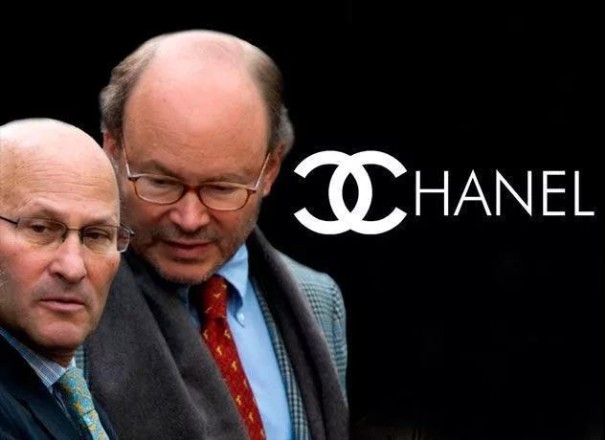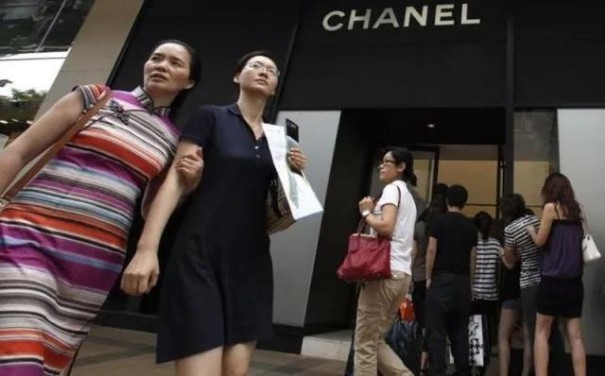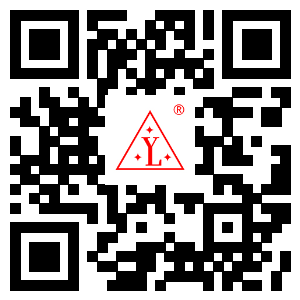Last Thursday (22), Chanel, a high-end brand, used its first annual report since its establishment for 108 years, which once again attracted people's attention to the changes in the pattern of luxury industry. According to the financial report, Chanel's sales in fiscal 2017 reached US $9.62 billion, up 11% from the same period last year, higher than Gucci, a luxury brand, and Louis Vuitton, a luxury giant.
Chanel's annual report is symbolic. The competition in the high-end brand market is intensifying, and Chanel's public financial situation "shows muscle" this time, intended to convey to the outside world its willingness and ability to cope with new challenges, as well as the confidence to maintain independent operation. Philippe blondiaux, Chanel's chief financial officer, said that the announcement of the financial statements was not intended to be listed, on the contrary, it proved our ability to maintain privatization without considering the possibility of potential acquisition.
After the downturn in 2015-2016, the financial statements of several luxury giants in 2017 showed strong profitability. This "narrow door" and attractive industry not only attracts the old shops and the new talents of Xiuchang to "chase the deer to the Central Plains", but also challenges the experts to transform themselves.
As one of the few independent luxury brands, Chanel will be acquired. For a long time, LVMH, an old tycoon, has three major fashion groups, namely Gucci, Bottega Veneta, kering of Alexander McQueen and Richemont from Switzerland, which are tripod in the global luxury market and also known as the "integrator" of the industry. Mayhoola, China Fosun Group, Shandong Ruyi group, and tapestry, which integrates Kate Spade, coach and other brands, with the background of royal family in the Middle East, have become the new stars attracting the attention of the industry.
Classics, such as Chanel, also need to take a unique development path among the giants and new upstarts. "Even if there is a very long brand heritage like Chanel, it is not easy to develop into a" three major "fashion empire," said a luxury marketing director at a front line in China
Although in terms of financial situation, the strength of Chanel brand is comparable to that of luxury empire with many brands, the brand is still questioned by the outside world about its ability to dominate the fashion industry. Alain and Gerard Wertheimer brothers, who control all of Chanel's shares, left the board of Chanel's UK headquarters in December last year. Alain, who is 69 and 68 years old, is still chief executive, but rarely appears at Chanel related events.

Alain and Gerard Wertheimer brothers, Chanel shareholders
According to blondiaux, the Wertheimer family still has an absolute impact on Chanel's day-to-day operations and creativity, "our CEO has new ideas, and Chanel does not need to consider the issue of heirs at present."
Although Chanel specially emphasized the stability and sustainability of the company's management in this financial report, it still needs stronger operation, brand management, innovation and other capabilities to grow from a single brand to a fashion empire.
Where is the moat in the luxury industry, which has always been sought after and covered with mystery? What factors can make the brand stand out and stand in an invincible position in the future where the young generation's consumption strength rises, science and technology, environmental protection and many other factors interweave?
The oldest brands and the latest technology
Digital transformation is the biggest trend of the whole retail sector in recent years. The experience of offline stores and the ability to reach users online have become the key to the success of luxury brands.
In recent years, the pace of brand acquisition of the three giants has slowed down, and they have concentrated on improving the influence of existing brands. In fact, the giants have not pressed the pause button on the acquisition. Eve Li, the former head of digital PR at Dior, told Tencent prism that it was just the target of extending from the brand to the camp of technology companies.
In February 2018, LVMH luxury ventures, a venture capital unit of LVMH, announced to invest in the New York shoes and tide brand consignment trading platform standimumgoods.com; Kaiyun cooperated with Swarovski and cappasity, a California start-up company, to show users 360 degree product display charts and AR / VR effects; Barneys New York hired Martin Gilliard, the former global head of Facebook's data cooperation department, as its CIO in 2017.
At the same time, the elements that crowned luxury brands before are still indispensable. "Integration with technology will happen in every corner of the brand," said Bernard Arnault, CEO of LVMH, "but the connotation of luxury still remains unchanged: investment in quality and craftsmanship and decades of brand heritage."
The importance of sticking to this centenary heritage in the current development is not only not weakened, but increasingly prominent. In a broad sense, luxury goods never leave technology. For example, a high-tech product usually requires more than 100 patents, which is also a traditional technology. The new wave of technology brings higher threshold and faster update, so in the effect presentation, the difference is bigger, and it also has the biggest impact on people's consciousness.
Change never happens overnight. Barneys New York has launched a number of high-tech functions, including intelligent recommendation system. Daniella Vitale, CEO of Barneys New York, said that the most difficult factor is human factors. Whether technical training for employees or concept change within the company is the most difficult link in the whole innovation process.
Eve Li also confirmed to Tencent's prism that the brand moat has never changed, such as brand, supply chain, upstream and downstream industries, technology, etc. "but the luxury industry itself has a small circle, and the risk lies in the shortage of talents." After leaving Dior, Eve founded digital fashion lab, a company focusing on luxury digital marketing. Its main customers include Dior, C é line, berluti, farfetch, etc.
Changes brought about by the younger generation
In October 2017, the luxury jewelry research report released by Bain, a consultancy, showed that 85% of the sales volume of the booming luxury jewelry market since the end of 2016 came from consumers under the age of 35.
How to attract new customers on the basis of serving the old customers has become an unavoidable problem for every luxury brand. Tong Shihao, a partner of GGV capital, told Tencent prism that one of the problems faced by the old luxury companies is that their loyal users are already the previous generation, while the younger generation may not be interested in owning a luxury suit, "the definition of fashion is being rewritten."
For example, environmental protection is deeply rooted in the hearts of young people. In some countries, environmental protection is not only a sign of elitism or high morality, but also closely related to vital interests. According to the Market Research Institute Mintel, 58% of Chinese consumers are willing to accept the brand premium of environmental protection, which is higher than other consumption regions.
In response to this trend, Kaiyun group launched "my EP & L" (environmental income statement) in October 2017 to monetize the impact of consumer goods such as clothing, bags and accessories on the environment. Take a garment as an example. First, you need to choose the main material, lining material and button material, then choose the source of raw material, and finally choose the place where the garment is produced. The system will calculate the cost of the garment to the environment from more than 4 million data points. The higher the price, the greater the impact on the environment, it can be said that the more green, the more noble luxury.
A silicon valley investor told Tencent prism that the weight of virtual competitiveness, such as the spirit of the times conveyed by brands, should not be underestimated. At this point, new and old brands are almost on the starting line.
A founder of New York Fashion Buyer platform told Tencent prism that no matter old or new brands, they must prove that they have resonance with young people. In the jewelry category of the founder's platform, he has abandoned the expensive jewelry that is too high and too few. Instead, he is good at finding middle price products with novel design and innovative marketing points. These products often highlight the craftsman's manual and environmental protection values. "If the values are old-fashioned, relying on historical accumulation, they can no longer attract consumers to save a few months' wages to buy a big brand handbag "
Young people bring to the luxury industry

LVMH, for example, was boosted by the Chinese market, with revenues of 42.6 billion euros in 2017, up 13% and profits up 29%. Bernard Arnault, CEO of LVMH, said the Chinese market has become extremely dynamic.
The head of the luxury giant's claim is profound, and the Chinese market, which has regained its new life, is quite different from the past. Chinese consumers used to be obsessed with products with big logos, but now they are paying more and more attention to small and high-end brands. "Louis Vuitton and Gucci used to be customers' favorites, but now the demand for goods from C é line and Derek Lam is bullish," one Chinese luxury buyer in France said
According to the fashion editor of Galeries Lafayette, a French high-end department store, the former only pays attention to logo, while the current Chinese consumers are well-informed and require logo plus fashion. A French student who has become a super VIP member of luxury stores in Paris for many years told Tencent prism that young girls in China are more extreme in their choice of styles, and Celine's "cool sex style" and Gucci's bright colors are more popular. While Louis Vuitton's "old flowers" are in great demand among entry-level people, they are growing young and advanced luxury in China Consumer groups are less popular.
It's not hard to understand the logic behind this change. Before, Chinese people bought luxury goods mainly for gifts, and luxury goods became a hidden currency equivalent. Therefore, logo is very important. Now young people buy luxury goods mainly for themselves, so they pay more attention to individuality and fashion.
Bruno Lannes, Bain's head of retail industry, makes the following analysis on the purchasing power of emerging China from the perspective of population structure: the Chinese consumers of the one-child generation are not keen on saving, and the impulse consumption is more. Because the children often get all the financial support from their parents, the consumption ability of these young people is amazing.
China's market has become a strategic place for the luxury industry, and Chinese players with a strong supply chain hinterland are also eager to try this industry with huge profit margin.
In February 2018, Fosun international acquired Lanvin, a French luxury brand, for us $123 million. Before the acquisition, Fosun began to lay out the fashion retail industry, holding shares of several fashion brands such as urban beauty, Folli follie, Tom tailor and Rio. Previously, Fosun was rumoured to have acquired La Perla, a luxury underwear brand, and Bally, a Swiss luxury brand, which was eventually acquired by Ruyi company in Shandong Province, China.
In June 2017, Jingdong, a Chinese e-commerce giant, invested $397 million to establish a partnership with farfetch, a British luxury retailer. Yoox, a luxury e-commerce platform listed in Milan, surged 9% after Jingdong's investment announcement.
No matter Bally, a Swiss shoe maker, baccarat, a French crystal factory, or Wolford, an Austrian underwear company, many high-end brands in Europe have received high price offers from Chinese buyers. The prices offered by several European fashion luxury families for Chinese also reflect the tuition fees that Chinese have to teach in the early days of conquering the luxury industry. After all, although China's manufacturing industry has experienced the basic training of luxury manufacturing in the OEM sector, it is still unimaginable that a brand that can compete with Louis Vuitton or Gucci can grow up in the short term.
If 30 years ago, Chinese companies had no choice in the global luxury market, the biggest challenge facing the rich Chinese companies is to go astray. A person involved in the transaction told Tencent prism that the high price purchase of Chinese buyers is not to seek short-term returns, but to get through the barriers of contacts, products and supply chain in the luxury industry. "With the choice of Chinese companies, we should be more careful and have a clear grasp of the strategy after the acquisition."
This article comes from the network, which is organized and released by the heat transfer press, rubber sole roughing machine, Youli shoes machine Co., Ltd. hotline: 13592760466
RealName:MIiss wang
Mobile:13592760466 Tel:086-769-85813551
Email:ylxj@zgyouli.cn
WebSiteUrl:http://www.youlimac.com / www.youlixj.com
CompleteAddress:NO35,zhuyuan road,liaoxia Houjie town Dongguan Guangdong


Mobile

Wechat applet

Copyright ©2020 Dongguan Houjie Youli shoe machine trade Technical support:Acshoes(Management login)